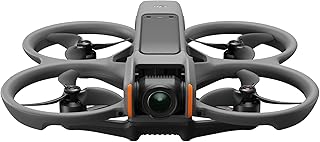How to Fly a DJI Drone Safely and Legally
Flying a drone can be incredibly fun and rewarding, but it's crucial to do so safely and legally. Here's a breakdown of key considerations:
1. Know the Law:
* FAA Registration: All drones weighing over 0.55 pounds (250 grams) must be registered with the FAA. You can register online at [https://registermyuas.faa.gov](https://registermyuas.faa.gov).
* Remote Pilot Certificate: If you plan to fly commercially or for business purposes, you need a Remote Pilot Certificate. This requires passing an FAA exam.
* Local Regulations: Cities and states often have their own drone regulations, such as flight restrictions in certain areas (e.g., airports, stadiums, prisons). Always check local laws before flying.
* Privacy Concerns: Be aware of privacy laws and avoid flying over private property without permission.
* National Airspace System: Understand airspace classifications and restrictions. You can use apps like AirMap or B4UFLY to check airspace information.
2. Understand Your Drone:
* Familiarize yourself with your DJI drone's capabilities and limitations: Learn how to operate the drone safely, including basic functions like takeoff, landing, and maneuvering.
* Read the manual: This is essential for understanding your drone's safety features and how to use them correctly.
3. Fly Responsibly:
* Never fly near airports or over people: Always maintain a safe distance from people and property, especially in crowded areas.
* Stay below 400 feet: The FAA generally limits recreational drone flights to below 400 feet.
* Keep your drone in sight: This is the most important safety rule! Losing sight of your drone can lead to accidents or property damage.
* Avoid flying in bad weather: Strong wind, rain, or fog can make flying dangerous.
* Be aware of your surroundings: Look out for obstacles, power lines, and other hazards.
* Follow the "See and Avoid" principle: Be vigilant and avoid collisions with other aircraft or objects.
4. Use Safety Features:
* Use a Return-to-Home function: This feature allows your drone to automatically return to its starting point if you lose connection or encounter problems.
* Set up geofencing: This feature restricts your drone from flying in certain areas, like airports or no-fly zones.
* Consider using a drone safety app: These apps provide real-time airspace information, flight planning tools, and safety alerts.
5. Be a Good Drone Pilot:
* Respect others' privacy and space: Be mindful of where you are flying and avoid invading people's privacy.
* Follow the rules: Always comply with all laws and regulations.
* Be a responsible representative for the drone community: Your actions can affect the perception of drone flying, so be a good ambassador.
Additional Resources:
* FAA Drone Zone: [https://www.faa.gov/uas](https://www.faa.gov/uas)
* AirMap: [https://www.airmap.com](https://www.airmap.com)
* B4UFLY: [https://www.b4ufly.com](https://www.b4ufly.com)
* DJI Fly App: Download the app for your specific DJI drone model to access information and safety features.
Remember, flying a drone safely and legally is everyone's responsibility. By adhering to these guidelines, you can enjoy the many benefits of drone flying while protecting yourself and others.


